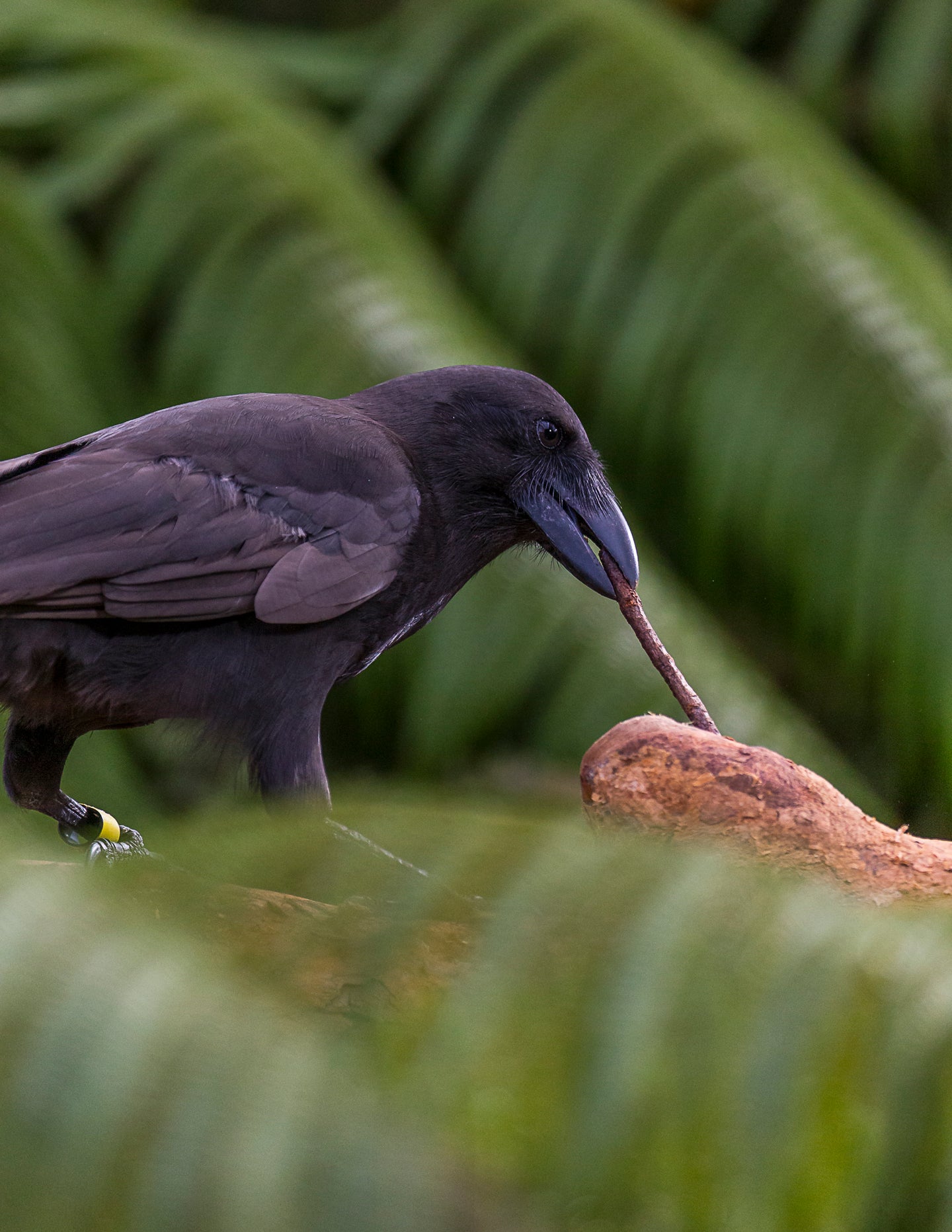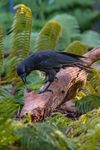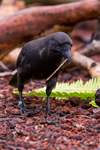Hawaiian Crows Discovered To Be Handy With Tools
Scientists studied foraging behaviors, prepping to release them in the wild


A captive Hawaiian crow uses a small twig to forage for food
At the aviary door, a prominent sign sternly reminds all who enter that they are forbidden to use tools inside. The warning may seem odd, given that this is a scientific research facility. But this is no ordinary laboratory. This is the Hawaiian aviary that houses some of the last remaining Hawaiian crows (Corvus hawaiiensis) in the world. Behavioral ecologist Christian Rutz and his colleagues prohibited tool use because they wanted to study whether these young crows would learn how to use tools without anyone teaching them.
“We didn’t even let anyone use a pencil for taking notes,” Rutz told Popular Science. And even without role models, these young crows eventually figured out how to use small sticks to forage for food in hard-to-reach places, like logs with small holes drilled in them.

In addition to raising seven juvenile Hawaiian crows, known in Hawaii as ‘Alalā, completely outside of the presence of adult crows or humans who use tools, the researchers also put adult crows through trials to test their tool-using abilities. To be precise, they tested 104 of the 109 ‘Alalā that remain in the entire world, all of which live in captivity in two Hawaiian facilities on the Big Island and in Maui. “We effectively tested the entire species,” said Rutz.

This crow found a great twig
Rutz explained that his team decided to study the ‘Alalā because of its unique physical characteristics that appeared to give it an evolutionary predisposition to tool use: a straight beak and binocular vision (forward-facing eyes). It shares these characteristics with the New Caledonian crow (Corvus moneduloides), whose superb tool-making skills were the only documented example of this behavior among crows–until this new study. “I had this eureka moment where I suddenly connected the dots and realized we could use these features to discover tool users of other species,” Rutz told Popular Science.
These physical characteristics are crucial for tool usage because they allow the bird to wield a small stick with its beak. A straight bill keeps the tool out in front of the crow’s eyes while it’s using it, and binocular vision allows the crow to move the stick accurately. “You can imagine that it would be hard to use a hammer if you didn’t have forward-facing eyes,” said Rutz.

In the end, Rutz’s team observed that 93 percent of mature ‘Alalā used tools, and all seven of the naïve juveniles experimented with tools, even though they were never taught. To Rutz, this suggests that the ‘Alalā is evolutionarily predisposed to tool use.
“By learning about this species’ natural tool-using skills, we have a better understanding of their ecological needs,” Rutz told Popular Science. This is important because San Diego Zoo Global, who manages these birds, plans to start reintroducing them into the wild. “If everything goes according to plan,” said Rutz, “it should be later this year.”